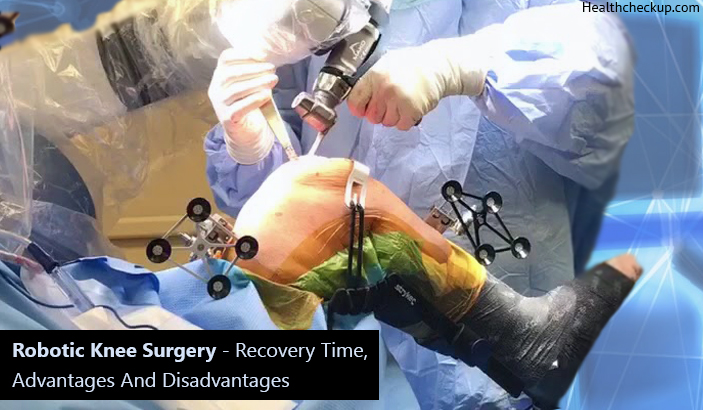Anyone suffering from knee pain knows that it can stop you doing the things that you love, spending time with loved ones or even getting out of a chair or vehicle. Alongside this, sufferers of knee pain will also know that surgery is an option for them. Traditional knee operations such as those like partial knee replacements can mean a sizeable stay in hospital of at least seven days and a convalescence period of up to two months.
The alternative, therefore, is Robotic Knee Surgery, which can make convalescence timeless lengthy and be entirely more beneficial than that of a traditional knee replacement. This is mainly an option when more traditional methods of treatment haven’t worked such as physiotherapy and are particularly effective for individuals that suffer from arthritis that only affects up to two of the compartments of the knee.
What is Robotic Knee Surgery?
With robotic knee surgery, it is still a form of partial replacement and an operation involving osseous matter skimming. It is a form of operation that allows your physician to utilize a computed tomography scan or some other such as a test in order to establish an exact course of action needed for your operation. The findings are then entered into a machine and then conveyed to the robotic machine. This then delivers on the spot analysis and provides a hologram of the course of action.
In essence, the robotics conducts the operation but it is meticulously commanded by the surgical physician at all times and essentially acts as their own metacarpi. During the operation, the physician will remove the affected tissues and the part of the joint, then using the robotic machine the physician shall replace this with pseudo elements thus constructing a new joint.
Robotic Knee Surgery Advantages
There are many advantages of this kind of surgery over the more traditional knee replacement surgeries. These advantages include
- Reduced Incision – With a traditional knee replacement the incision can be between 8 to 10 inches long, but with the robotic knee replacement, the incision is only a maximum of three inches long, thus resulting in less scarring and less blood loss.
- Accuracy – This form of operation will allow the physician to accurately and succinctly remove purely the impaired knee area. The positioning of the implant is also accurate thus meaning the new knee will endure less abrasion and adhesion, thus it will be improbable that it will become loose.
- Superior Outcomes – There is a lesser non-success rate with the robotic vs the traditional knee replacement. In fact, over a 24-month period, the robotic method is nearly ten times more successful than the traditional method.
- Quicker Alleviation– Individuals that have the robotic replacement vs the traditional knee replacement can often weight bear and mobilize during the same 24 hours that the operation has occurred.
- Greater Organic Sensation – The holograms that were designed by the robotic machine before the procedure design a completely singular implant that is completely unique to joint of that patient thus, they will feel organic.
- Speedier Convalescence– The days spent in the hospital after the procedure level out at up to three days vs the week to ten days that can be spent convalescing from a traditional knee replacement. Convalescence time at home is lesser too at a couple of weeks compared to nearly ten weeks.
- There are fewer instances of lack of success thus fewer requirements for modification operations.
- Less artificial joint difficulties after the procedure
- Shorter periods of recuperation
- It allows for a customized operation proposal in order to allow the surgeons to place the artificial joint with complete exactness.
- It is perfectly designed to mirror the structure of the individual’s knee allowing for the release of pain from replacements that fail.
- The robotic machine mirrors the knees routine motion habits, thus helping to lessen any extreme emphasis on the muscles, nerves, tendons, and sinews, therefore ensuring that mobility is more habitual after the replacement is in place.
- It is safer as using the robotic machine only allows physicians to operate within a certain area, thus, eliminating any chances of mistakes.
- It can minimize the loss of blood during the procedure as the operation uses less surface area and thus there is less area to bleed.
[Read – Causes of Burning Sensation In Leg Below Knee]
Robotic Knee Surgery Disadvantages
As it is with any medical procedure there are problems with robotic knee surgery. These include
- The robotic machine is a current piece of equipment and thus there are only primitive substantiations to exhibit increased presentation. All of the implants that are in situ, however, have been certified.
- The robotic machine can only be as precise as the information that it is given, this particularly covers the caliber of the computed tomography scans and the knowledge base and skill set of the staff operating the machine. Thus, appropriate training must also be implemented and utilized.
- The period of time that the operation will take is more extended than that of a conventional knee replacement, thus hypothetically subjecting the individuals to an increased risk of contagions.
Robotic Knee Surgery Recovery Time
The recovery time is greatly reduced in robotic knee replacements vs traditional knee replacements. The patient will stay in the hospital for a maximum of three days and will generally only have a convalescence period of two to three weeks in comparison to the eight weeks with a traditional knee replacement.
Dr. Adil Maqbool is an M.B.B.S. Doctor and a freelance writer. His ebook on Hipjoint and Sleep has been a well-known success for his clients.








